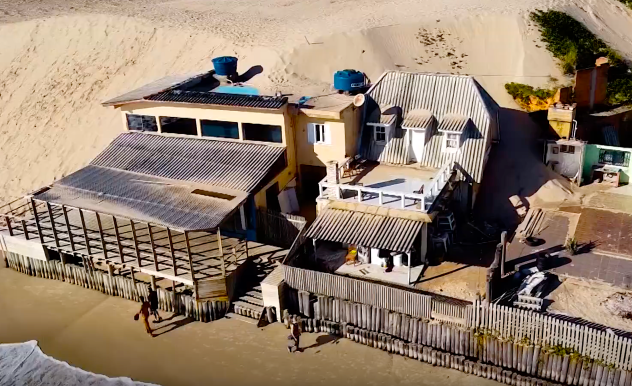In the tourist paradise of Praia dos Ingleses in Florianópolis, Brazil, sand dunes are approaching oceanfront homes closer than homeowners would like.
The following written content by Zachary Rosenthal

In the tourist paradise of Praia dos Ingleses in Florianópolis, Brazil, encroaching sand dunes are bringing the beach closer than homeowners would like.
Florianópolis is about a 450-mile drive to the south of Sao Paulo, which is the most populous city in Brazil. Most of Florianópolis, including the beach of Praia dos Ingleses, is on the picturesque Santa Catarina Island, and the city is well known for its charm and high quality of life. However, even the most picturesque islands can be hazardous.
Drone video shows the gargantuan dunes — taller than the roofs of the beach houses — swallowing up backyards. If the dunes continue to push toward the ocean, it seems all but certain they will cover several houses.
Several homes have developed severe structural damage, and officials have declared the houses uninhabitable due to fears that their roofs could soon collapse.
Strong winds blowing toward the ocean have pushed the dunes toward the coastal houses, which were illegally built in a Permanent Preservation Area.
Florianópolis has strict zoning regulations, measures necessary to protect Santa Catarina Island’s sand dunes, lagoons and lush forests. However, with limited space to build new houses on the beach and always valuable beachside property, some builders may opt to skirt regulations.
Perhaps surprisingly, sand can be a dangerous beach hazard. A 2007 study from the New England Journal of Medicine found that over a 10-year period, 31 Americans died from suffocating after a sand hole, often one constructed by the victim, collapsed, according to reporting from The Daily Times.
The report’s author, Dr. Bradley Maron of Harvard Medical School, wrote that people should be aware of the dangers of sand hole collapses, a hazard that he believes is more common than even his findings indicate. Read more from AccuWeather.





